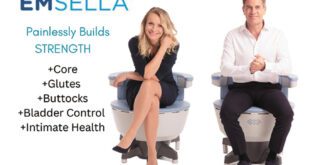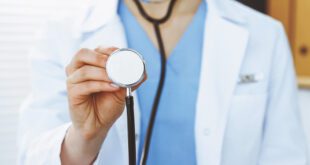Time can be our friend, offering experience, wisdom and wonderful memories, but it can also cause more than its share of issues, including eyelid problems. Age, gravity and changes in the skin can make eyelids begin to sag, bag and get puffy. These problems are often more than just cosmetic concerns – they can also impair vision.

Eyelid disorders vary among people based on age, lifestyle, health and heredity. They come with fancy medical names for common issues that we can easily
recognize:
Dermatochalasis (excess skin): This mouthful of a word simply describes the condition of having excess skin in the upper and/or lower eyelids. No, you didn’t grow more skin – it’s just the eyelid skin losing elasticity, causing it to stretch and droop, creating a baggy, puffy appearance. At very least, this excess skin creates a tired, haggard appearance that probably doesn’t represent how you feel. At worst, it can impact your peripheral vision, not only from side to side but also up and down, which can make it hard to avoid bumping your head or tripping on things on the ground, making this condition a potential hazard. Eyelid surgery carefully removes excess skin along with any fatty deposits.
Ptosis (drooping upper eyelid): Gravity and heredity can cause sagging of the upper eyelid to the point where it drapes over the cornea, which can limit both side and central vision. Cosmetically, it makes people look half asleep or dazed; medically, it can invite more serious problems like amblyopia (also known as “lazy eye”) and astigmatism (irregular shaping of the cornea), both of which can greatly affect vision. By shortening the muscle that lifts the eyelid, drooping lids become a thing of the past.
Ectropion (protruding lower lid): Age and certain skin disorders can cause the lower eyelid to turn outward, creating a red, rheumy, irritated look and inviting dryness, irritation, pain, excessive tearing and other problems. Because chronically dry eyes are more vulnerable to disease, this is both a medical and cosmetic problem. Surgery carefully pulls the lower lid back into position.
Entropion (retracting lower lid): Age, infection and skin damage can cause the lower eyelid to turn inward so that skin and eyelashes irritate and abrade the eyeball, causing redness, tearing and discomfort and increasing the chance of infection. Surgery helps to restore the lower lid to normal function.
Festoons (skin folds): Time, heredity and other contributors can cause the orbital fat pads in the lower eyelids/upper cheeks to slip downward and outward, creating hanging aprons of skin and deep creases beneath the eyes. Festoons can greatly impact appearance and, when they’re serious enough, restrict vision. While often a product of time, festoons can also affect younger people, especially if the condition runs in the family. Surgery helps to remove the puffy folds and flatten the skin’s surface.
Experience You Can Trust
Happily, eyelid surgery can correct all of these problems safely, quickly and effectively. Board Certified Doctor of Osteopathic Medicine, Dr. Shelby Terpstra, has performed countless minimally-invasive outpatient surgeries to help correct and repair eyelid dysfunction and restore field of vision, reduce eye irritation and a create a noticeably fresher, happier, more rested appearance.
People whose eyelid disorders produce compromised vision, chronic irritation or recurring eye infections are often eligible to have their procedures covered by insurance. Even people whose vision isn’t impacted report being transformed by the cosmetic and confidence-boosting benefits. Time spent in surgery and subsequent downtime are minimal, making eyelid surgery a safe, viable way to begin the next chapter of life looking and seeing better.
If you suffer from an eyelid disorder and would like to know if surgery might be right for you, call Lake Eye Associates at 352-632-2020. We’re happy to help.
Lake Eye Associates
Shelby Terpstra, DO
352-632-2020
 Central Florida Health and Wellness Magazine Health and Wellness Articles of the Villages
Central Florida Health and Wellness Magazine Health and Wellness Articles of the Villages



